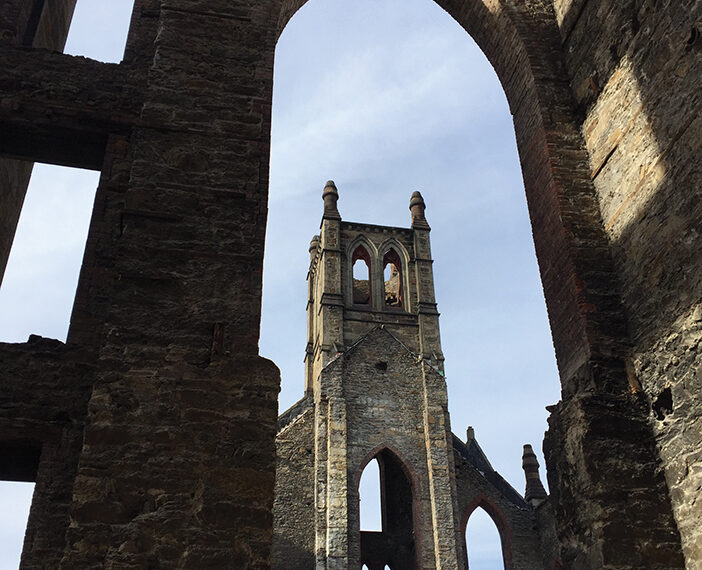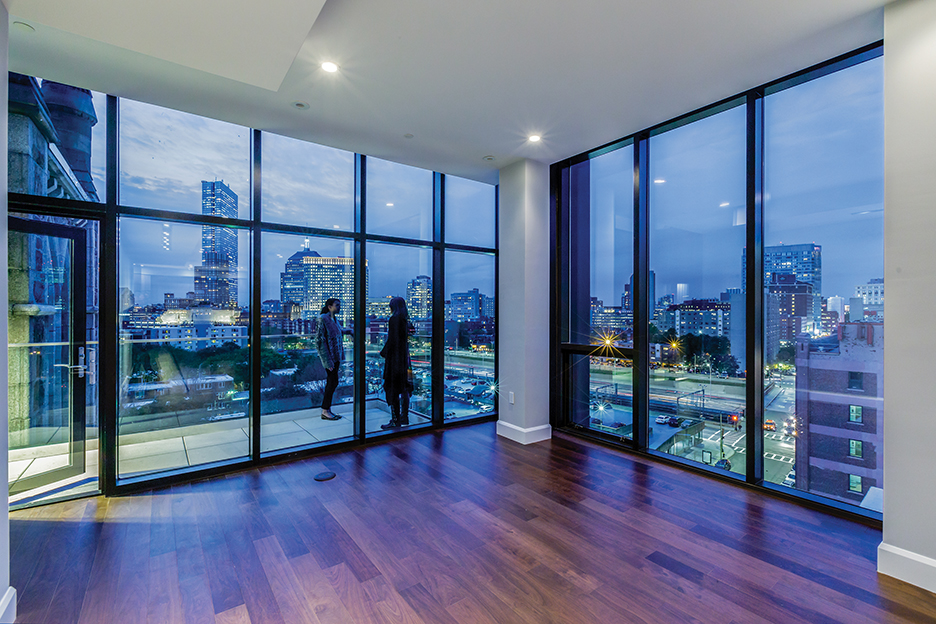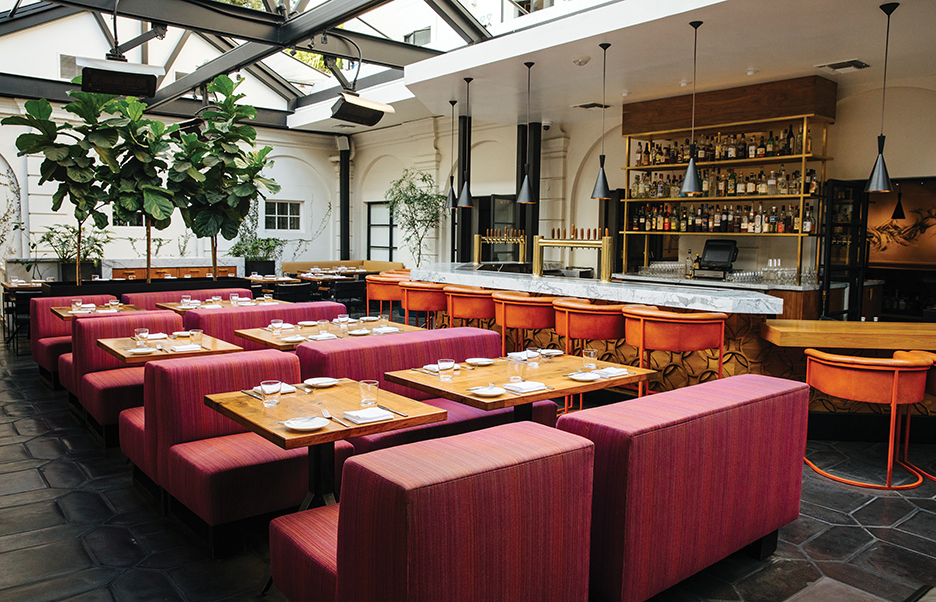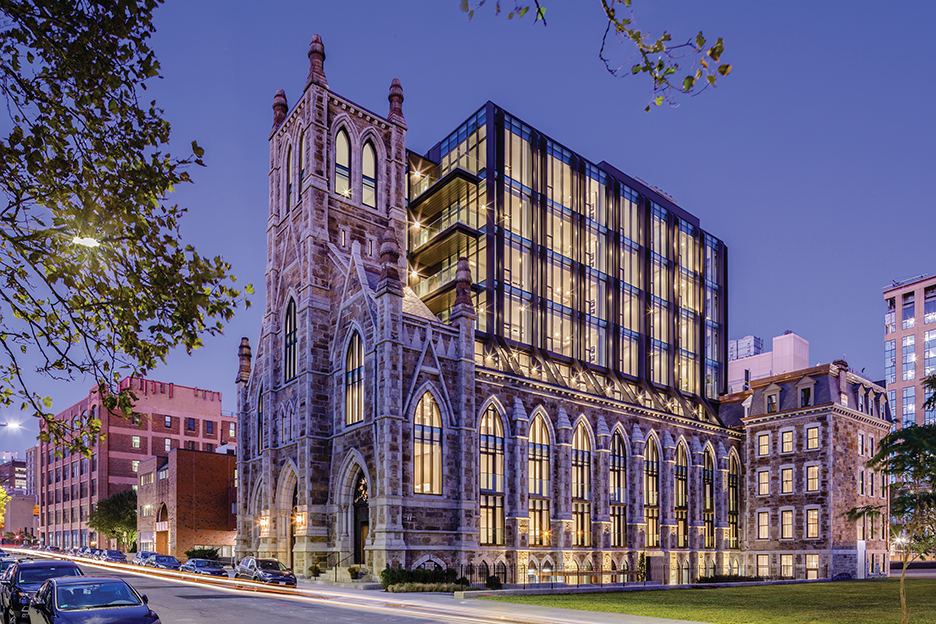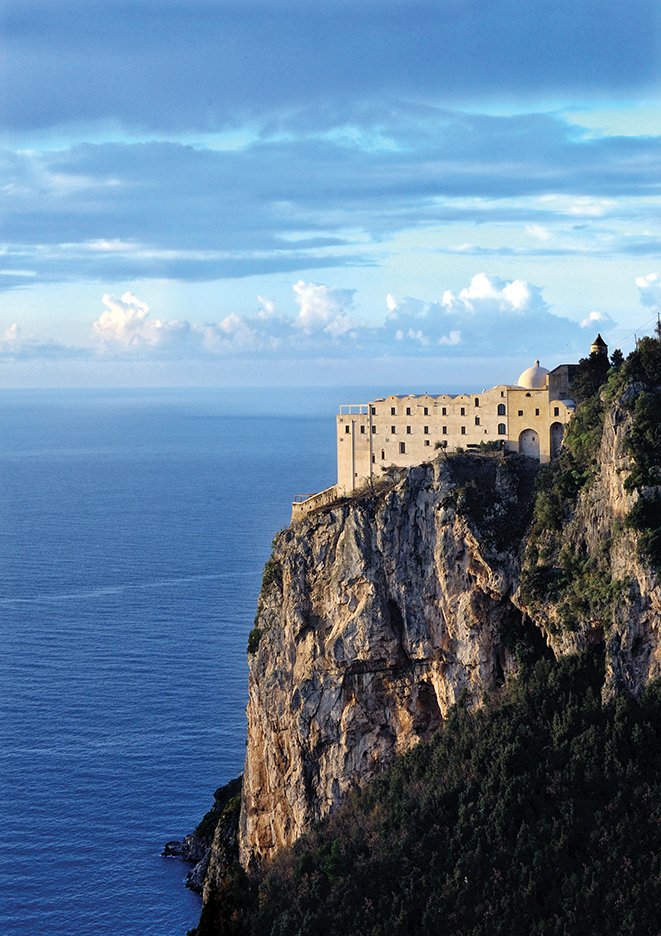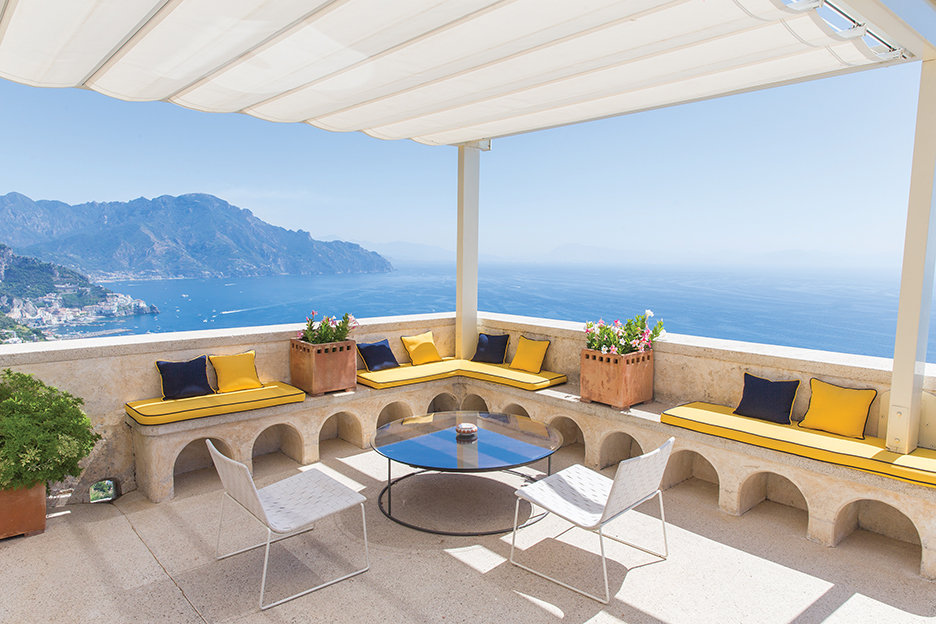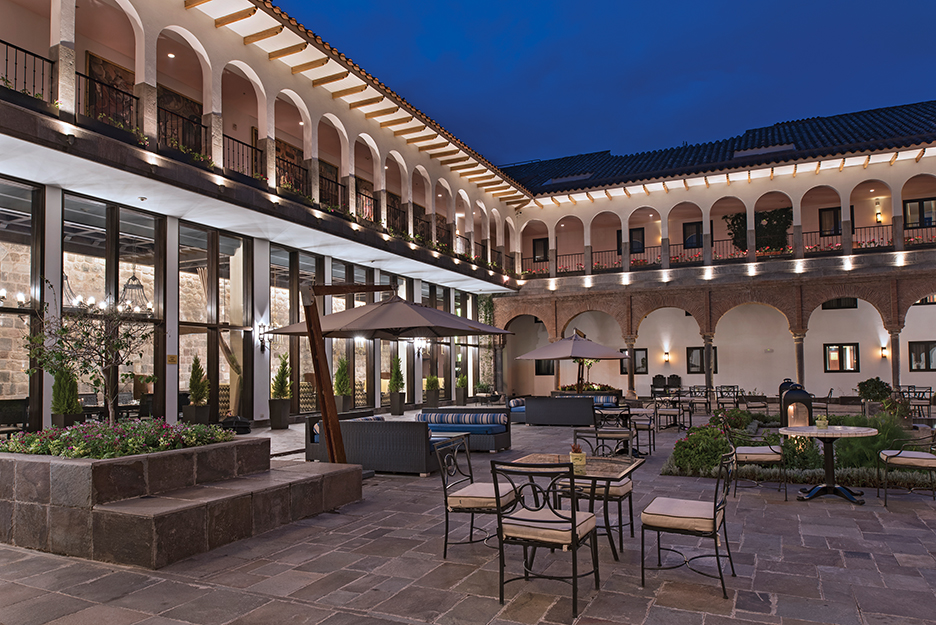By Roger Grody
Places of worship are designed for a very specific function, so when they are abandoned — parishioners migrate elsewhere or structures become physically compromised — it is challenging to repurpose the buildings. But designers who appreciate the heritage of sacred sites achieve extraordinary transformations, retaining a sense of spirit even when the buildings are readapted for less virtuous activities.
As congregations have declined, some neighborhood churches in Boston have been decommissioned, leading to creative conversions into luxury condominium projects. Representing one of the most dramatic of those adaptive reuses is The Lucas, a sleek high-end condominium building rising from the Gothic form of Holy Trinity German Catholic Church, originally constructed in 1874.
Holy Trinity had been vacant for a decade, so the city allowed an ambitious developer to erect a bold, eight story steel-and-glass tower within the granite and puddingstone masonry shell of the historic structure, with five floors rising above the original roofline of the sanctuary. While the new construction may sound incompatible with the Gothic structure, Finegold Alexander Architects designed the new addition to be discretely tucked behind the original façade.
Tony Hsiao, principal and director of design at Finegold Alexander, suggests that churches, with their unique detailing and large windows, make transformations into luxury condominiums a natural progression, and reports The Lucas was sold-out prior to completion. Ellen Anselone, principal and vice president at the Boston-based firm, submits that despite the project’s bold infusion of modernism, it was sensitive to the neighborhood. “By preserving the façade, this project maintains a neighborhood scale and is consistent with the fabric of the neighborhood,” she says, noting that residents were pleased the abandoned building was redeveloped and appreciated that the new use was residential.
The visible stories of the modern addition are stepped back, reducing its visual impact, and creative design elements further harmonize the tower with the 19th century structure. “The inspiration was to integrate the new with the old, tying the new structure to the historic framework,” explains Hsiao. “The steel buttresses on the new tower were derived from the buttresses in the original Gothic architecture,” he adds.
Severe earthquake damage threatened demolition of Los Angeles’ Cathedral of Saint Vibiana, but preservationists ultimately saved the 1876 landmark. A new, modern cathedral was erected a few blocks away, and beloved Saint Vibiana was masterfully repurposed for less pious entertainment. The restored architecture Italianate structure now houses Redbird, the restaurant of acclaimed L.A. chef Neal Fraser, and Vibiana, an adjoining event space.
Amy Knoll Fraser, the chef’s wife and owner/operator of Redbird and Vibiana, recalls her first tour of the building in 2008, when she learned the owners of the property were looking for a restaurant to fill the historic space. “I froze, got chills and thought, ‘We have to do this’…I knew we were the ones to transform it.” The couple felt obligated to pay reverence to one of L.A.’s most historic buildings by offering a dining experience that balances tradition, innovation and cultural L.A.’s Saint Vibiana, a historic Italianate cathedral, has been reimagined as Vibiana, an event venue, and Redbird, one of the city’s top restaurants.
Working with designer Robert Weimer, who collaborated with the couple on previous restaurants, a design was conceived that introduces contemporary components while still paying homage to the existing architecture. “We viewed the original as a backdrop for the adapted use, lovingly placing the new elements within,” explains Weimer.
Emphasizing the intention was to complement the original architecture, not transform it, the designer states, “The added pieces are modern and crisp, and together with the slightly worn edges of the original historic building, the space has a dynamism and dialogue it wouldn’t have had otherwise.”
Redbird’s dining room, a soaring space capped by a galleria-like glass ceiling, occupies what was originally Saint Vibiana’s rectory. It hosts a trendy clientele enjoying dishes like beef tartare with kimchi aioli and egg jam, or California sea bass with fregola and mussels in saffron-scented tomato broth. Knoll Fraser reports, “Neal’s cooking has always been a celebration of the multiculturalism of our city and we feel the property deserves to remain a place of community.” Chef/owner Neal Fraser suggests, “The architecture told us how to design the space and the menu,” and observes, “People love the fact the building is historic, but doesn’t feel like a museum.”
Occupying a landmark 1859 church in Portland, Maine, is Trine Events at Grace, hosting weddings, nonprofit banquets and corporate events. Noting the history of the building is what distinguishes the venue, owner Anne Rutherford states, “It’s impossible to be in the space without feeling the hum of almost 200 years of gathering, celebration, reverence and community.”
It is not uncommon for churches, convents or monasteries to be reimagined as boutique hotels and Monastero Santa Rosa Hotel & Spa on Italy’s idyllic Amalfi Coast is a particularly stunning example. A restored 17th-century monastery, the hotel hugs a rugged cliff above the Tyrrhenian Sea, offering breathtaking views from its Michelin-starred restaurant and infinity pool. The property’s 20 rooms and suites, housed in what were originally the nuns’ quarters, provide the kind of sanctuary that is impossible to find in a large cosmopolitan hotel.
Although historic churches and monasteries may not be intrinsically well-suited to be repurposed as luxury hotels, Monastero Santa Rosa’s front office manager Pompeo Amendola believes this site demonstrates the enormous potential of such conversions. “These properties offer the unique opportunity to create specialized spaces and curated experiences that provide a genuine sense of place otherwise unavailable to guests,” he maintains.
Amendola reports a team of architects and historians collaborated on the restoration of Monastero Santa Rosa Hotel & Spa. “The main focus was to revive the spirit of Santa Rosa, creating modern-day experiences for the most discerning traveler while maintaining elements of its storied past,” he explains. One small but poetic example of connecting guests to the site’s history is a celebration of the monastic order’s legendary baking heritage. A sweet cream-filled pastry known as sfogliatella Santa Rosa originated at the monastery and is still baked on-site, placed in breadbaskets for guests to enjoy at breakfast.
In the Peruvian Andes, the JW Marriott El Convento Cusco is built on the site of a 16th century convent. At the hotel’s reception desk is a massive, sculptural lighting fixture (handcrafted from 76,500 Swarovski crystals) that represents the God of the Sun in Incan iconography, a further reminder that this hotel was really 500 years in the making.
Another historic South American convent housing a luxury hotel is the Sofitel Legend Santa Clara, located in the historic district of Cartagena, Colombia, a short walk to the ocean. The property successfully blends modern amenities with the spirit of the original 17th century convent. Its 1621 restaurant, for instance, occupies the Clarist nuns’ former dining room, but now features refined French technique applied to local ingredients.
“Our experiences are truly unique,” states Carmen Otero, sales and marketing director of the Sofitel Legend Santa Clara. She notes that colonial Cartagena has been designated a UNESCO World Heritage Site and that the guest experience at the hotel is fully integrated into the ancient city’s rich history. “In all of our spaces we’ve involved local culture, which allowed us to retain the magic that can only be expressed in this place with 400 years of history,” explains Otero. Elaborate ocean-view suites tastefully blend the site’s religious history with the decadence of pure luxury.


